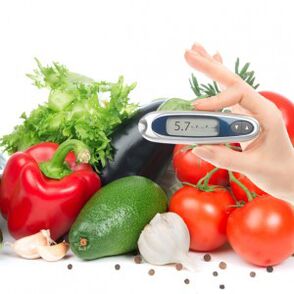
Back to home page Diabetes diet is one of the disease control methods to prevent the development of acute and chronic complications. The key task of treatment measures is to normalize the metabolic process in the body by optimizing the blood glucose level to the maximum allowable value.
The key to maintaining the health of patients is to adhere to the limited carbohydrate content in the diet and choose reasonable medications.
If the treatment of the disease is not started in time, diabetes will complicate the kidneys, nervous system, blood vessels, eyes, and heart.
Etiology and pathogenesis
Today, 4% of the world’s population suffers from this disease. According to data from the World Health Organization, 8640 diabetic patients die every day in the world, and 3 million die every year. This number is several times the death rate caused by hepatitis and AIDS. According to data from the International Diabetes Federation, as of 2014, there were 285 million carriers of the disease. At the same time, according to forecasts, by 2030. Their number may grow to 438 million.
The cause of the disease:
- Obesity;
- Genetic susceptibility;
- Virus infection (flu, tonsillitis), the result of which is damage to the pancreatic islet devices and potential diabetes;
- Mental/physical trauma;
- Vascular autoimmune diseases.
External factors leading to the development of diabetes:
- Long-term mental stress, stress, fear, fear;
- The food you eat contains excessive carbohydrates and saturated sugars;
- Overeating.
Diabetes symptoms in men and women:
- Weakness;
- Polyuria (increased urine output to 8 liters per day);
- lose weight;
- Hair loss;
- lethargy;
- Increased urination;
- thirsty;
- Decreased libido, decreased effectiveness;
- Itching of feet, palms, and perineum;
- Increased appetite;
- The wound cannot heal well;
- Decreased eyesight; There is a smell of acetone in the mouth.
If you find signs of a disease, you should consult a doctor immediately, because the effectiveness of diabetes treatment directly depends on the rate at which the initial symptoms of the disease are found, the diagnosis and the implementation of drug treatment. Remember that in the early stages, this disease is easier to treat.
Disease classification and nutritional effects
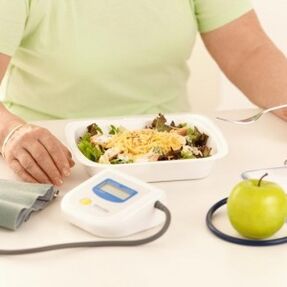
The main effect of drug treatment should be given to patients with diet.
The type of diet depends on the stage of pancreatic depression, its manifestation mechanism and treatment methods.
Degree of disease
- Type 1 diabetes. It is a serious autoimmune disease related to impaired glucose metabolism. In this case, the pancreas does not produce or produces too little insulin needed to maintain important human functions.
- Type 2 diabetes. This disease usually occurs in sedentary people who are sedentary, whose excess weight exceeds 15% of their total body weight.
- Gestational diabetes. This type of diabetes accounts for 4% of women during pregnancy and is more common in the second trimester. Unlike the first two diseases, in most cases, it disappears immediately after the child is born, but sometimes it can turn into the second type of diabetes. . . .
In 1% of the world's population, the less common forms (variants) of diabetes are prediabetes, latent, neuropathic, kidney, steroids, bronze, MODY.
Diabetes diet type
Insulin injections, hypoglycemic drugs and physical exercise are very important to obtain a positive effect in the treatment of diseases. However, according to some doctors (A. Bronstein, E. Malysheva, V. Kononov), the right diet plays a fundamental role.
Types of nutrition plan
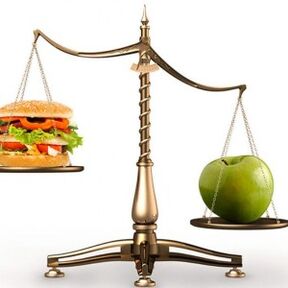
- A carbohydrate-free diet is a technology based on eating a lot of complex carbohydrates in vegetables and fruits, and excluding foods containing simple carbohydrates from the menu.
- Protein diet for diabetes. The principle of this diet is to reduce the consumption of carbohydrates and fat by increasing the protein in the diet. The main focus of this methodology is to replace meat with lean fish, poultry and fermented dairy products.
- Low-carbohydrate diet, used to write menus for patients with type 1. 2 diabetes.
- Buckwheat diet. Regular consumption of this product has beneficial effects on the body: it can reduce the level of "bad" cholesterol and saturate it with iron, rutin, calcium, magnesium, fiber, iodine, and B vitamins; diabetic buckwheat diet helpsMinimize the occurrence of macrovascular complications and ulcers.
- The diabetes prevention diet is designed to reduce the risk of pancreatic dysfunction.
With the deterioration of the heart system and blood vessels, diet 10 is practiced for diabetes. It is unique in that it reduces the consumption of fluids, salt, fat, and carbohydrates, because these substances can overload the liver, kidneys and nervous system.
Let us consider in detail what kind of diet is needed for diabetes, and what recipes are allowed during dietary nutrition.
Carbohydrate count
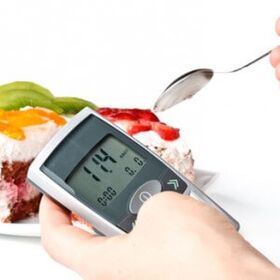
When detecting diabetes, it is important to properly balance the intake of carbohydrates and hypoglycemic substances in the body. To calculate the calorie content of a product, a common parameter called a bread unit is used. At the same time, 1 XE (10-13 g of pure carbohydrates) raises glucose to 2. 77 mmol/l, and "needs" 1. 4 units of insulin to absorb. Since the injection is performed before the meal begins, it is important to plan a meal in advance.
The carbohydrate content of a meal should be 4-6 bread units. The frequency and timing of meals directly depend on the type of sugar-reducing drugs.
The number of products matching 1XE:
- Sugar-1 tablespoon;
- Honey-1 tablespoon. ;
- Spaghetti-1. 5 tablespoons;
- Juice-150ml;
- Ice cream-60 grams;
- Sweet water with gas-180ml;
- Bread (rye, white, black)-25 grams;
- Pancakes or pancakes-1 piece. ;
- Dough-25 grams;
- Melon-300g;
- Porridge (oats, buckwheat, wheat)-2 tablespoons. l. Grain;
- Sausage-200 grams;
- Kefir, fermented baked milk, milk-250ml;
- Mashed potatoes-100 grams;
- Apple-100 grams;
- Beans (peas, beans)-5 tablespoons. ;
- Kiwi-150 grams;
- Pear-90 grams;
- Oranges-100 grams;
- Berries-150 grams;
- Plums-100 grams;
- Peaches-150 grams;
- Watermelon-400g;
- Dried fruits (prunes, raisins, dried apricots)-20 grams
The carbohydrate saturation in the daily diet of diabetic people should not exceed 17 bread units (2000 kcal).
In addition to calculating sugars, for patients with pancreatic insufficiency, it is important to carefully choose meals based on prohibited and permitted ingredients.
| Product category | Allowed | Limited number available in |
Fasting |
|---|---|---|---|
| Baked products | cut off | Wheat, whole grain, rye, secondary flour baked goods | Puff pastry, pastry |
| Meat and Poultry | - | Lean veal, lamb, chicken, turkey, rabbit, boiled tongue, weight loss sausage | Fatty pork, beef, goose, duck, canned food, sausage, bacon, smoked sausage |
| Elementary Course | Borscht, cabbage soup, fish soup, soup: mushrooms, fish, beetroot | low fat solyanka | Noodle soup, broth, traditional Harcho |
| fish | Thin fish fillets | Mussels, squid, shrimp, oysters, crayfish, salmonids (trout, salmon, salmon) | Eel, caviar, canned oil, herring fish (herring, herring, herring), st fish (star-shaped st fish, beluga, st fish) |
| Dairy products, fermented dairy products | Milk, kefir, unsalted cheese 25-30% | Homemade yogurt, milk 0%, feta, cheese 5%, curd, fermented and baked milk | Sour cream, 50% to 60% cheese, salty cheese, glazed tofu, butter, condensed milk, cream |
| Congee | Buckwheat, pearl barley, oatmeal, barley, millet | - | Semolina, brown rice, pasta |
| Vegetables | Carrots, cabbage (various), beets, pumpkins, tomatoes, zucchini, eggplant, onions, radishes, radishes, mushrooms, cucumbers, fresh green leafy vegetables, sweet peppers | Corn, boiled potatoes, fresh beans | French fries, fried vegetables, pickled and salted vegetables |
| Fruits, berries | Papaya, lemon, cranberry, pear | Plum, apple, peach, orange, cherry, blueberry, watermelon, black currant, raspberry | Grapes, figs, dates, raisins, bananas |
| Dessert | Fruit Salad | Samburuka, candied fruit, sweet mousse, jelly, honey green cocktail (December 1) | Ice cream, cake, fatty biscuit, cake, jam, pudding, candy, milk chocolate with nuts |
| Sauces and spices | Mustard, pepper, horseradish, tomato juice, cinnamon, dried spices and vanilla | Homemade mayonnaise | Tomato sauce, stir-fry, seasoning sauce |
| Drinks | Tea, cocoa, coffee powder (without sugar and cream), rose hip and raspberry soup, unsweetened fruit syrup, sour berry drink | Natural vegetable juice (diluted) | Sugar lemonade, kvass, sweet drink, alcohol |
| Fat | - | Vegetable oil (linseed, corn, olive sunflower), unsalted butter | Lard, meat fat |
After converting carbohydrates into bread units, it is important to determine the amount of insulin required for blood sugar after a meal. Following this advice will help avoid life-threatening diseases-hyperglycemia and hypoglycemia.
Level 1 diabetes diet
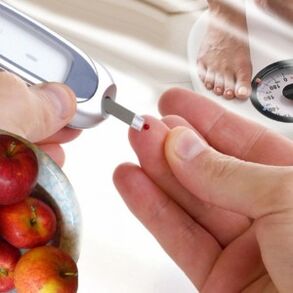
The basis of type 1 diabetes diet is strict control of blood glucose concentration (3. 5. . . 5. 5 mmol / l).
Consider the characteristics of food intake so that you can keep it within a predetermined range.
- The maximum daily calorie content (daily total) of dishes is 2000 kcal.
- Partial nutrition (at least 5 times).
- Eliminate pure sucrose from the menu to lower blood sugar.
- Assign the main carbohydrates for breakfast and lunch.
- No dinner at night.
- Avoid intake of easily digestible carbohydrates: baked goods, honey, jam, jam.
- Use natural sweeteners as sweeteners.
- Monitor product quality, "naturalness".
- Adjust the schedule of meal insulin therapy (take long-acting drugs before meals and short-acting insulin after meals).
- Count the number of bread units to calculate the daily carbohydrate intake. For a meal, you should eat no more than 8 XE.
In the presence of gastrointestinal diseases (pancreatitis, ulcers, gastritis), the diabetic diet prohibits the intake of the following products: pickles, smoked meat, thick soup, coffee, carbonated drinks, alcohol, mushrooms, and stimulate excessive secretion of enzymeOf canned foods because they affect the speed and level of carbohydrate absorption.
Foods allowed for type 1 diabetes:
- Yeast-free baked goods (lavash);
- Berries, fruits (plum, cherry, lemon, apple, pear, orange);
- Soy products (tofu, milk);
- Cereals (barley, oatmeal, buckwheat porridge);
- Vegetarian soup;
- Drinks (slightly carbonated mineral water, berry mousse, dried fruit preserves);
- Vegetables (onions, zucchini, peppers, beets, carrots);
- Nuts (unbaked);
- Weak coffee, unsweetened green/black/fruit tea.
Don’t eat:
- Thick soup, broth;
- Pasta, flour products;
- Sweets (cakes, pastries, candies, chocolate, muffins);
- Fast food, semi-finished products;
- Alcoholic beverages (red liqueur is strictly prohibited);
- Sour, smoky, spicy food;
- Fatty meat (pork, lamb, duck), fish (mackerel).
The daily calorie intake of obese patients in this diet is in the range of 1200-1400 kcal. You can add some dishes without getting rid of extra pounds.
A week's diet for overweight insulin addicts
Day 1
- Breakfast-bread-1 slice, porridge-170 grams, green tea, cheese-40 grams;
- The second breakfast-pear-0. 5, young cheese-60 grams;
- Lunch-borscht-250g, cabbage stew-200g, vegetable salad-100g, steamed meatloaf-100g, Lavash;
- Afternoon tea-rosehip broth, cheese-100 grams, jelly-100 grams;
- Dinner-cauliflower zrazy-100 grams, vegetable salad-150 grams;
- Before going to bed-milk-200ml.
Day 2
- Breakfast-boiled veal-50 grams, green tea, omelet, tomato-1 and bread-1 slice;
- The second breakfast-grapefruit or orange-1 pistachio-50 grams;
- Lunch-chicken breast-100 grams, vegetable salad-150 grams, pumpkin porridge-150 grams;
- Afternoon tea-grapefruit-1 piece, kefir-200ml;
- Dinner-boiled fish-100 grams, stewed cabbage-200 grams;
- Bedtime-Unsweetened cookies-50 grams
Day 3
- Breakfast-lavash, weak coffee without sugar, cabbage rolls and meat-200 grams;
- The second breakfast-strawberry-120 grams, yogurt-200 ml;
- Lunch-Spaghetti-100 grams, vegetable salad-100 grams, steamed fish-100 grams;
- Afternoon tea-orange-1, dried fruit soup;
- Dinner-Pear Casserole Cheese-250g; Before going to bed
- -Kefir.
Day 4
- Breakfast-porridge-200 grams, green tea, cheese-70 grams of boiled eggs -1;
- The second breakfast-cheese and turkey sliced toast;
- Lunch-Zucchini stew-200 grams, vegetarian soup-150 grams, bread -2;
- Afternoon tea-thin biscuits-15 grams, unsweetened black tea;
- Dinner-mung beans-200 grams, boiled chicken fillet-150 grams, rose hip broth;
- Before going to bed-3 dry bread.
Day 5
- Breakfast-low-fat cheese (up to 5%)-150 grams, kefir-200 ml;
- The second breakfast-pumpkin seeds-2 tablespoons, raisins-3 tablespoons;
- Lunch-roasted potatoes-100 grams, vegetable salad-150 grams, sugar-free preserves-100 grams;
- Afternoon snack-unsweetened fruit tea, roasted pumpkin-150 grams;
- Dinner-vegetable salad-200 grams, tonkatsu-100 grams, or rye flour blueberry pancake-250 grams; Before going to bed
- -1% kefir.
Day 6
- Breakfast-boiled egg -1, fruit tea, light salted salmon -30 grams;
- The second breakfast-cheese-150 grams, carrots-1 piece.
- Lunch-green borscht-250 grams, cabbage rolls with brown rice and carrots-170 grams; pita bread
- Afternoon tea-kefir-150 ml, bread -2;
- Dinner-fresh peas-100 grams, boiled chicken fillet-100 grams, stewed eggplant-150 grams;
- Before going to bed-dry biscuits-50 grams
Day 7
- Breakfast-Ham-50 grams, Buckwheat porridge-200 grams, green tea;
- The second breakfast-a salad of tuna, cucumber, cherry tomatoes, rye whole wheat bread-150 grams;
- Lunch-Carrot stewed zucchini-100 grams, cabbage soup-250 grams, bread-1 slice, chicken patties-50 grams;
- Afternoon tea-cheese-100 grams, apricots or plums-4;
- Dinner-Onion squid cutlet-150 grams, dried fruit preserves;
- Before going to bed-milk-200ml.
The low-carbohydrate diet for diabetic patients is a strictly balanced diet that allows patients to maintain their sugars within a normal range and systematically lose weight.
Type 2 diabetes diet

The basics of healthy diet and nutrition:
- Replace refined carbohydrates with sweeteners;
- The ratio of BZHU should be 20%: 30%: 50%;
- It can reduce animal fat consumption by up to 50%;
The calorie content in the daily diet depends on the patient's energy expenditure and weight.
Diabetes Diet 9 or Table 9 is a balanced plan for diabetic patients with moderate to moderate obesity. Adhere to the diet, the patient's diet includes: protein (100 grams), carbohydrates (320 grams), fat (80 grams), of which 30% are unsaturated triglycerides.
The type 2 diabetes diet is almost the same as the nutrition plan of the person monitoring health:
- Divide the total daily food into 5 meals: 2 snacks in 1-2 snacks, 3 staple foods in 5-8 breakfasts;
- Don’t skip breakfast;
- The maximum rest time between meals-4 hours;
- Last meal of the night-1. 5 hours before going to bed;
- Between meals, it is recommended to eat vegetable salad, fruit, freshly squeezed juice, dried fruit broth, kefir, milk, green tea or fruit tea, unsweetened biscuits (biscuits), and bread.
Daily diet for type 2 diabetes
Day 1
- Breakfast-100 grams of asparagus, scrambled eggs made of 3-4 quail eggs;
- The second breakfast-walnut, squid, apple salad-200 grams;
- Lunch-roasted eggplant stuffed with pomegranate, nuts-100 grams, beetroot-250 grams;
- Afternoon tea-avocado and cocoa ice cream-100 grams;
- Dinner-Salmon steak with radish sauce-200g
Day 2
- Breakfast-yogurt, oatmeal-200 grams (you can use stevia or agave nectar as a sweetener), apple -1.
- The second breakfast-fruit smoothie (grated in a blender, cherries, strawberries, melon and 4 ice cubes, 80 grams each);
- Lunch-roast beef-150 grams, stewed vegetables-200 grams;
- afternoon snack-cheese and pear casserole-150 grams;
- Dinner-vegetable mix-200 grams, avocado-half of fruit.
Day 3
- Breakfast-fried eggs from two eggs, then add low-fat cheese, basil, tomatoes;
- The second breakfast-"steamed" vegetables-100 grams, hummus-100 grams;
- Lunch-vegetarian soup-200 grams, peas-50 grams chicken patties-150 grams;
- Afternoon tea-pear-1, almond-50g;
- Dinner-salmon-150 grams, yogurt, spinach.
Day 4
- Breakfast-roasted fruits (apples, plums, cherries) in agave nectar-200 grams;
- The second breakfast-tuna and lettuce sandwich;
- Lunch-steak-150 grams, boiled cauliflower-200 grams, tomato salad, arugula, parmesan cheese-100 grams;
- Afternoon dessert-fruit and berry dessert (cut mango, kiwi, strawberry, mix with snow, pour orange juice and freeze)-150g;
- Dinner-Broccoli Roll-200g
Day 5
- Breakfast-orange-1 fruit tea, low-fat cheese-30 grams, bread-2;
- The second breakfast-beet kernel nut salad-200 grams;
- Lunch-rice-200 grams, salmon, steamed-150 grams, grapefruit -1.
- Afternoon tea-berry, cream 10%-150g;
- Dinner-rosehip broth, squid cutlet and onion-200 grams
Day 6
- Breakfast-carrot and cheese souffle-200 grams;
- The second breakfast-cauliflower zrazy-100 grams;
- Lunch-orange salad, chicken breast, arugula-200 grams, dried fruit preserves, borscht vegetables-200 ml;
- Afternoon tea-kiwi fruit, raspberry mousse-200ml.
- Dinner-steamed cod with carrots-200 grams, kefir.
Day 7
- Breakfast-baked apple slices, stuffed with oatmeal, nuts, raisins-1 piece.
- The second breakfast-fruit and vegetable salad of kohlrabi, celery, pear-200 grams, shrimp-100 grams;
- Lunch-polenta-200 grams, vegetables, cooked cod-200 grams, kiwi fruit-1;
- Afternoon tea-Mascarpone cheese strawberry-100 grams;
- Dinner-cucumber salad with onion, spinach-250 grams, green tea.
According to the course of the disease, it can be changed in the patient menu.
Please keep in mind that the above example diet is not a universal nutritional system for all diabetic patients, so it is important to monitor their health while tracking the diet. If the food goes bad, the "problematic" food should be excluded from the menu.
Gestational Diabetes Diet
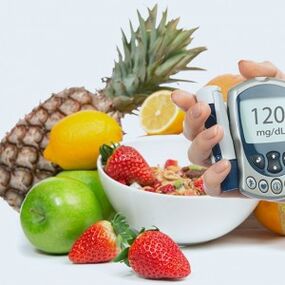
In some cases, mothers-to-be’s pancreas becomes dysfunctional, which can lead to gestational diabetes. In most cases, this situation can be easily controlled with proper nutrition.
Diabetes diet during pregnancy
- Eliminate sugar, candies, baked goods, semolina, sweet fruits and foods containing sweeteners from your diet.
- Balance the daily menu. The daily intake of carbohydrates is 50%, protein -30%, fat -15-20%. At the same time, Malysheva's diabetic diet can minimize food intake, which contains plant and animal triglycerides (5-10%).
- Observe drinking habits-drink 1. 5-2 liters of water every day.
- Enrich your daily diet with starch (cereals, rye bread, brown rice, beans, sweet potatoes, Jerusalem artichoke, radish, beets) and fermented dairy products.
- Eat snacks on fresh fruit.
- Divide the daily food intake into three meals (breakfast, lunch, dinner) and two kinds of snacks (lunch, afternoon snack).
- Provide a multi-vitamin complex for pregnant women to enrich their daily diet.
- Use a decoction of celery root, tree flowers, blueberry leaves, lavender buds, and pods to reduce sugar through folk remedies.
- Limit caffeine intake. The allowed alkaloid content is 2 parts coffee or tea.
The optimal calorie intake for pregnant women’s daily diet is 2000-2500 kcal. At the same time, no carbohydrate diet for gestational diabetes is prohibited.
Recommended menu for expectant mothers with high blood sugar
- Breakfast-millet porridge-150 grams, fruit tea, rye bread-20 grams;
- The second breakfast-whole grain bread-50 grams, unsalted cheese 17%-20 grams, apple -1.
- Lunch-buckwheat porridge-100 grams, a mixture of cabbage, Jerusalem artichoke, and cucumber-150 grams, beef stew-70 grams;
- Afternoon tea -5% cheese-100g, unsweetened biscuits-2 and orange-1;
- Dinner-Boiled chicken tenderloin-60g, vegetable garnish (carrots, cabbage, pepper)-100g, tomato juice-180ml, bread-2 pieces;
- 3 hours before going to bed-kefir/yogurt-200ml.
In addition to receiving special diets, gestational diabetes patients also show walking (40 minutes a day) and moderate physical activity (gymnastics, water sports).
Children with insulin-dependent diabetes diet

Diabetes in children and adolescence is more difficult to carry than adults. Children's genetic susceptibility, stress and malnutrition are the main reasons for the development of autoimmune diseases.
In 80% of cases, children are diagnosed with insulin-dependent diabetes (type 1). Early diagnosis, immediate treatment and strict adherence to special diets will help prevent the consequences of the disease.
Diabetes diet for children
- Exclude sugar, soda, candy, wheat flour, baked goods, fried foods, and baked goods from the menu.
- Enrich your daily menu with unsweetened fruits, vegetables and herbs (unlimited). Banned-grapes, bananas, raisins, dates, persimmons, figs.
- Use natural sugar substitutes.
- Divide the daily food intake into 6 meals. At the same time, it is important to eat regularly. The allowable deviation in the child's nutrition schedule is 15-20 minutes.
- You should eat in 15 minutes. After the insulin injection and 2 hours after the injection.
- If you cannot eat at the set time, you can eat bread, pears, nuts, cheese sandwiches or apples as snacks. Under no circumstances should you go hungry.
- Taking a slice of chocolate immediately will help prevent blood sugar lowering episodes. Therefore, adults with children should always buy sweets.
- Enrich your child's daily diet with fermented dairy products.
- Calculate your daily fructose intake. The amount of sugar substitutes directly depends on the age of the child and the nature of the disease process.
In order to lower blood sugar, it is recommended that children give blueberries, nettles, corn stalks, mint leaves, barberry branches, bean pods, Jerusalem artichoke fruits, ginseng and leucococcus soup.
Therefore, the diet of diabetic patients plays an important role, because the health and life of patients depend on the correctness of its composition. Therefore, it is important to be very careful and careful about the diet and persistence, otherwise negligence will lead to tragic consequences.




























